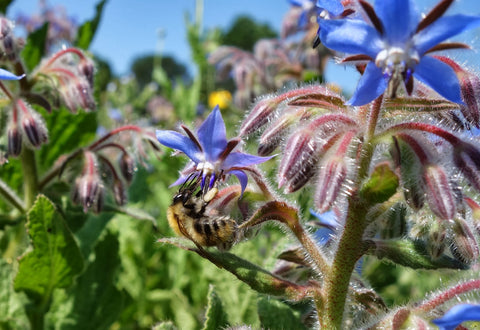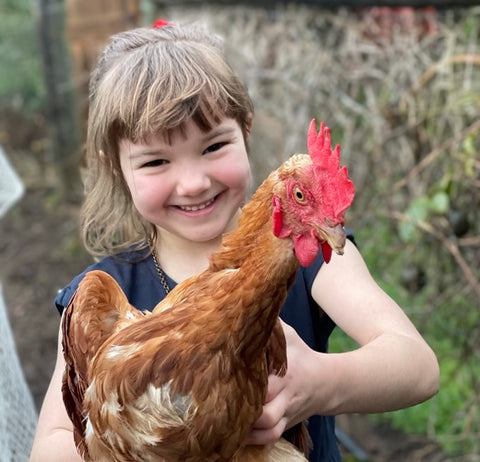Regenerate Your Garden: A Small-Scale Revolution
You might think regenerative farming is something only big farms can do but in fact, you can apply SOME of these principles in your home garden. By combining organic fertilisers with gardening best practices, you can transform your garden into a thriving ecosystem. But first, let’s understand what Regenerative Agricultureis.

Benefits of Regenerative Agriculture
Regenerative Agriculture (Regen Ag) is a global movement that is gaining significant momentum from a grassroots level. There are many drivers of this movement, one of which is the increasing consumer demand for transparency of how the food that we eat is produced.
To define Regen Ag is a complex thing to do as it can go by many names such as – holistic farming, natural intelligence farming, organic, conservation Ag, or even agroecological! One thing it has seemed to have surpassed is the notion of being ‘Sustainable’. By basic definition, sustainability means to maintain and not to take away from the system, whereas the key foundation of the Regen Ag approach is to ‘Regenerate’ which means to revive and bring to a new and more vigorous life.
Central to this approach is the soil and the life that resides in it. Underpinning the whole system are the soil microbes. Everything revolves around these little guys and the core principle of this system is to ensure that they are looked after and enhanced every step of the way.
The unifying principles of the Regen system are:
- To abandon tillage completely and avoid bare soil events by maintaining cover.
- To reduce or eliminate chemicals that harm soil biology.
- Integrate livestock and cropping operations.
- To increase plant diversity.
- To increase soil carbon.

In addition to these, another key premise of the approach is to create a self-nourishing eco-system. This is where the growing of a multi-species cover crop comes into play. The notion of diversity creates diversity is an important part of stimulating the interaction of soil biological processes & soil chemistry processes that can increase nutrient availability and soil carbon cycling.
Ultimately this approach is designed to improve the productivity and resilience of soils by storing more water and reducing the reliance on synthetic inputs. This will then lead to lower input costs and more importantly greater profits.
One thing is for sure is that Regenerative farming is here to stay.
If you are going down this road it is important not to overlook the fundamentals of preparing the foundation so that this type of approach can be built on.
Soil Dynamics specialise in identifying your most limiting factors and can help map out the best road to take.
By adopting regenerative practices, we can help combat climate change, protect our water resources, and produce healthier, more nutritious food. And the best part?
Some but not all of these principles can be easily adapted for Home Gardeners of any experience level. So, read the below on how you can apply this in your Home Garden
Building Healthy Soil is The Foundation of Your Garden
Remember in order for plants to grow they take food from the soil, this is so important to understand as the soil needs to be fed in order to continue to allow your plants to thrive. It's just like us humans, we need not just any food, but good nutritious food in order to thrive and not just survive.

Here's how you can do it:
- Composting: This can be the golden ticket to soil health. By turning kitchen scraps and yard waste into nutrient-rich compost, you provide your plants with a steady supply of food while improving soil structure and water retention.
- Cover Cropping: Plant cover crops between growing seasons or resting a garden bed each season to protect the soil from erosion, add organic matter, and prevent weed growth. Green Manure mixes i.e., Legumes like clover and alfalfa can also fix nitrogen in the soil, reducing the need for chemical fertilisers.
- No-Till or Low-Till Gardening: Doesn't really apply for the home garden.
- Soil Amendments: Incorporate organic matter like compost, manures, and organic soil bio stimulants to improve soil health and create a diverse environment for the microbiology. Remember, Diversity creates Diversity.
Creating a Biodiversity Haven
Biodiversity is key to a resilient ecosystem. A diverse garden attracts beneficial insects, pollinators, and other organisms that help maintain balance. Here's how to create a haven for wildlife:
- Plant Diversity: Grow a variety of plants, including vegetables, herbs, flowers, and even native species. This creates a rich habitat for beneficial insects and pollinators.
- Companion Planting: Research companion plants to maximize space and benefits. Some plants repel pests, attract pollinators, or improve the flavor of nearby crops.
- Wildlife-Friendly Practices: Provide food, water, and shelter for birds, bees, butterflies, and other beneficial creatures. Consider adding a bird bath, planting nectar-rich flowers, or leaving a small patch of wildflowers undisturbed.
- Reduce Pesticide Use: Opt for organic pest control methods or integrated pest management strategies. Pesticides can harm beneficial insects and disrupt the delicate balance of your garden ecosystem.

Water Wisely: Maximizing Every Drop
Efficient water management is crucial for sustainable gardening. By conserving water and improving soil moisture retention, you can reduce your water footprint and create a more drought-resistant garden.
- Mulching: Apply a thick layer of organic mulch to help retain soil moisture, suppress weeds, and protect soil from temperature extremes.
- Rainwater Harvesting: Collect rainwater from rooftops or gutters and store it for use during dry periods. This can significantly reduce your reliance on municipal water.
- Efficient Irrigation: Water deeply and less frequently to encourage deep root development. Avoid overhead watering, as it can lead to water waste and fungal diseases.
- Drought-Tolerant Plants: Consider incorporating plants that are naturally adapted to your region's climate. These plants require less water and can help reduce your watering needs.
Integrating Animals (If Possible)
Animals can play a valuable role in regenerative gardening. While not suitable for everyone, incorporating livestock or poultry can provide benefits like nutrient cycling, pest control, and weed management.

- Chickens: Can be a great addition to a home garden. They provide nutrient-rich manure, eat pests, and help aerate the soil.
- Worms: Create a worm compost bin to produce valuable worm castings, which are rich in nutrients and beneficial microorganisms.
- Other Animals: Consider other animals that can fit your lifestyle, such as rabbits or goats. However, careful planning and management are essential.
Small Steps, Big Impact
Remember, you don't have to implement all of these practices at once. Start with small changes and gradually build on your efforts. Even small steps can make a big difference in the health of your garden and the environment.
By embracing regenerative practices, you'll not only create a thriving garden but also contribute to a more sustainable future. So, get out there and start regenerating your world, one garden at a time!
Wellness from the ground up is where it's at- Now that's Dynamic!
...... And remember we’re here to help
With gratitude, Soil Dynamics
With thanks to Soil Dynamics for providing the content for this blog






Leave a comment (all fields required)